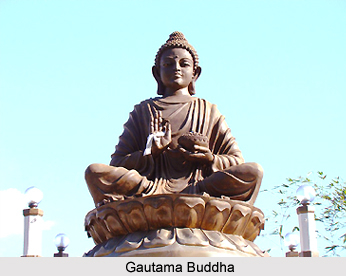 Lakhisarai was an established administrative and religious centre during the golden period of Pala dynasty. This region of Lakhisarai District was identified in old times as a place of rocks, mountains and statues of different Hindu and Bhuddhist gods and goddesses. Even in Buddhist literature, this place had been mentioned as "Anguttri" meaning thereby a district status. This beautiful place, naming Lakhisarai came into existence, as a new district from Munger. Hence, this place in the ancient period also can be identified with the name of Munger or Anga Pradesh. Lakhisarai region during Pal administration was the capital of Pals for some period. Other evidences found in the district under the Pala king Dharampala.
Lakhisarai was an established administrative and religious centre during the golden period of Pala dynasty. This region of Lakhisarai District was identified in old times as a place of rocks, mountains and statues of different Hindu and Bhuddhist gods and goddesses. Even in Buddhist literature, this place had been mentioned as "Anguttri" meaning thereby a district status. This beautiful place, naming Lakhisarai came into existence, as a new district from Munger. Hence, this place in the ancient period also can be identified with the name of Munger or Anga Pradesh. Lakhisarai region during Pal administration was the capital of Pals for some period. Other evidences found in the district under the Pala king Dharampala.
Noted Historian Dr. D.C. Sarkar during his visit, found some more evidences based on which, he also confirmed that this place was very important. The Chinese traveller Huen Tsang described this place having 10 Buddha mathas and more than four hundred Buddhists resided here. Most of the Buddhists living here were Hinayanas . There were 10 temples also of Hindus and people lived here with peace and harmony. People of that time used to live in a much-planned manner. According to historian Sri Radha Krishna Chaudhary all, the Buddha mathas were situated in southern side of Ganga and the king of Pal Bans was also a Buddhist. The administrator of Pal dynasty ruled over this region of Lakhisarai in seventh century to eleventh century. Sen dynasty also ruled this region for some period in 11th century. The people believe that Krimila of that period is now Kiul Basti, which is situated in Southern side of Lakhisarai Railways station. Krimila was a centre of Buddhist religion. Lord Buddha also stayed here for three years on Chaliya Mountain and Jantugram was nearby Chliya Mountain and was situated on bank of river Krimikala, where Lord Buddha with his followers used to visit and deliver speech.
History indicates also that Md. Bin Bakhtiyar attacked this region in 11th century. Sher Shah Suri also ruled this region in the 15th century. Surrajgarha witnessed Great War of Shershah and Mugal emperor Humayun in 1534. Also in 1953, a fight occurred in Fatehpur near Surajgarha between Miya Suleman and Adlshah in which Adilshah was killed.
In religious context, Surajgarha was also an important place for Shaivam sect. One beautiful Shiva Mandir was there and large number of people gathered there for worship of Lord Shiva with religious devotion.



















